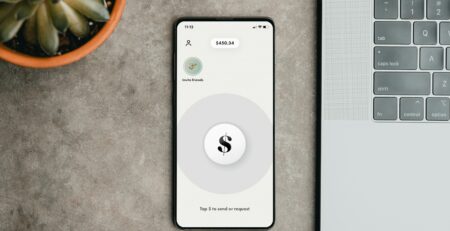Updating The Supply Chain Model With UX Design
When supply chains break down, companies have less product and customers can’t access what they want and need. As the final destination for supply chains, users are greatly affected by supply chain movement.
Many experts in supply chain management are increasingly open about the fact that the current system needs an overhaul. User-centric supply chain management could be the key to that change.
Read on to find out everything you need to know about how user experience and supply chains can be intertwined for the better.
What Is A Supply Chain?
Supply chains are getting a lot of media coverage these days – and not because they’re thriving and healthy. But what are they, exactly?
It’s easy (and much simpler) to imagine them as a path from raw material to finished product. While that is part of the overall supply chain, it’s not the whole story.
The entire supply chain extends from the initial order of a product until it is delivered into the hands of the consumer. It can include raw material sources, refineries, shipping companies, vendors, manufacturers, warehouses, transportation companies, retailers, and more.
Steps In The Supply Chain
Not all supply chains look the same. Some might not include all the steps listed below while others could have additional ones based on the particulars of their product and business model.
We’ll discuss how UX design impacts the supply chain in terms of these steps in the following sections.
1. Sourcing
First the firm has to locate raw materials needed for the product they’re offering. Maybe it’s fabric for a clothing company or wood for furniture – whatever it is, you have to find it somewhere.
As the initial stage in a supply chain, mistakes in sourcing can be costly and time-consuming to correct. Investment also compounds as the chain progresses, making high initial costs really unattractive for businesses. That being said, they have to produce a high-quality product and that means they can’t scrimp on their sourcing, either.

2. Refining & Manufacturing
Before the raw materials can be assembled into the final product, they have to be altered. For instance, you can’t take wood right out of the forest and turn it into a table even if that rustic look is part of your branding efforts.
Bulk supplies of metal and other raw materials need to be turned into the various components of the final product. For computers, this refining stage is incredibly complicated. For less complex items like clothing, fewer refineries and manufacturers will be necessary.
There might be more than one stage of refining and manufacturing as well. For example, the rubber that will ultimately be used to make the eraser on a pencil needs to be refined before it’s turned into a flat and cut into its final eraser shape. The refining and cutting likely happen at two different locations.
3. Assembly
All the prepared elements of the final product are put together in this stage. Like refining and manufacturing, assembly can and frequently does happen at different locations. In the automotive industry, for instance, the transmission and engine are assembled at one location before being shipped to the assembly plant where the final automobile is made.
Assembly supply chains are a complex area in their own right. They’re almost like a microcosm within the larger system, which is why many companies exist simply to run the assembly plants other companies use for this stage of their supply chains.
4. Packaging & Storage
Once the product is ready for consumption, it needs to be packaged in a way that makes it safe for transport. Unless you’re operating under heavy demand, that product will have to be stored somewhere before it’s ready to be shipped to a retailer or a customer.
Ideally, planning will limit this storage to a bare minimum. But even with the best modern technology, your supply chain model will have to include some provision for storing items while you wait for retailers and purchasers.
5. Selling
Branding and marketing entice people to purchase a product or service but in terms of the supply chain model, we’re looking more specifically at what supplies are needed to support the selling of the product.
The product life cycle is a big consideration for the supply chain because it tells managers how much and how frequently they need to order supplies. Sales and operation planning is a common method used to account for upcoming needs. Demand planning, promotion planning, and merchandise planning all intersect in this stage.
6. Shipping
At this point, the materials in the final product have likely traversed huge distances. These days, it’s not uncommon to find goods with sources across multiple continents. Once people start ordering products, the goods have to be transported once again.
Shipping of final products is one of the biggest speed bumps in the supply chain model employed by most companies today. Although shipping containers are ready to be offloaded, there are frequent shortages of labor to carry them to their distribution centers.
Last-mile logistics have become a big point of interest for many companies and even spurred academic research. It’s the final piece of the supply chain where a delivery driver picks up packages from a distribution center and takes them to the customer.
Although it’s the culmination of months of effort, the last mile is typically the most or only visible part of the supply chain for end customers.
User Experience And Supply Chains
Now that we’ve defined the basic supply chain model, let’s discuss how the user experience plays a role.
If the customer only sees the last mile portion of the chain, how can UX design improve the rest of the process? The answer is deceptively simple: there are numerous users at every step of the supply chain and UX design can improve the experience for all of them.
The company selling the final product is most capable of impacting the supply chain with a user-centric approach. They have the longview on the entire process and are, after all, the ones coordinating the whole thing most of the time.
What’s vital to understand about supply chains is that they’re predicated on long-term relationships, not brief interactions. Perhaps once it was good enough to approach suppliers as impersonal cogs in the productive machine of the final company, but these days relationships are what counts.
That’s not just a personal preference among managers, either. Fostering relationships builds trusts and allows for deeper information sharing and thus more efficient planning.
Plus, supply chains have more players than they used to. More people at different levels of the process need information about other stages, creating a need for planning interfaces that help build strong communication and transparency.
For the final retailer, this is a good change. Let’s say a client puts in an emergency order. In the old supply chain model, the final retailer is left on their own to try and find a solution. With the increased communication of new supply chain models, different actors can work together to find a solution that gets the client what they need without sacrificing the needs of other clients.
How Can UX Improve Supply Chain Management?
Hopefully, it’s clear by now just how important planning is to supply change management. User experience and supply chains can come together to make planning much more realistic and accurate so that supplies are available when (and hopefully just before) retailers and customers need them.
UX designers research their users and build feedback mechanisms into products so that companies can collect real time data and make inferences about the future from it. We’re gathering so much information these days that artificial intelligence is just about the only way to process it all and find patterns within it.
From the warehouse to tracking shipments to building apps for the final customer to order with, UX designers can positively impact the supply chain at every stage. They can find and provide solutions for all kinds of users.
Employees at warehouses, transportation workers, fulfillment managers, demand planners, and retail workers can all benefit from intuitive interfaces, better communication tools, and generated forecasts. All that can be attained with the right UX approach.
Here are some ways UX designers can improve on an existing supply chain model:
- Identify Users In Every Chain Segment
Considering the different parts of a supply chain model in terms of users isn’t something most managers are used to. But once you make the change and view the different players as users with common interests, the whole thing becomes much easier to view in total.
Structuring your supply chain management in terms of where interactions happen rather than segments based on the product itself gives a more illustrative look at how the whole thing works. With that perspective, you can start gathering more meaningful information and focus on what will make the biggest impact.
- Track Shipments And Sales To Reveal Patterns
There are many ways to track things like sales and shipment status, but good UX design will integrate these methods into the supply chain seamlessly.
It’s not only with customer-facing interfaces, either. Apps and other solutions for inter/intra-company communication can also track number of shipments, on-time percentage, and whether these factors had a meaningful impact on sales.
You can also manage inventory with this kind of information. Sales patterns can be recorded and used as historical information (YTD, Sales To Date) to indicate when supplies need to be ordered again.
- Streamline Warehouse Processes
The employees at storage, distribution, and transportation warehouses are also users. Not only that, but they’re responsible for some of the most critical parts of the supply chain model.
Give them a better experience and tools to do their jobs and the more expedient staff will speed up the process at these crucial hubs. Quality assurance and task allocation will make staff efforts more effective and make the job more enjoyable overall.
- Manage Real Time Inventory
Before digital supply chain tools were widely available, companies were restricted to historical data for planning. The most recent data was a few months old because that’s how long it took to gather it and search for patterns.
Now, inventory can be measured in real time. Deductions in materials can be automatically triggered when pallets leave warehouses or purchases or made at the final point-of-sale.
All this up-to-the-minute information will drastically improve the accuracy of supply chain management predictions. Managers and other important decision-makers will be better prepared for whatever comes around the corner – plus, they’ll have more realistic data to work with.
- Provide Customer Service Solutions
The supply chain doesn’t completely end when the final customer has the product in-hand. There is also the matter of complaints, concerns, returns, and feedback during the life cycle of the product.
UX designers are well-versed in creating such tools for users at a wide variety of companies. This will let supply chain managers see into a part of the process that is often left to marketing and customer service professionals only.
- Integrate Artificial Intelligence
Like it or not, artificial intelligence is the next big thing. While it might not be self-aware robots, AI is capable of gathering, processing, and discerning patterns in more data than human eyes could ever hope to cover in a reasonable amount of time.
With UX design, artificial intelligence has an introductory point into the supply chain. It’s not an outside tool but something integrated into apps and software that make the many segments of the supply chain work more efficiently already.
- Make The Chain More Agile
Between up-to-the-minute inventory and sales information, artificial intelligence, and lightning-fast communication tools, using products designed with UX in mind will make all parts of the supply chain more capable of responding to new changes in demand, nature, regulations, or anything else that would otherwise have disrupted the supply chain.
Organizational agility is key to remaining solvent in turbulent times and that agility needs to start in the supply chain or the rest of it doesn’t matter. If your company is the only one able to provide access to products, you can rest assured your sales will skyrocket.
- Promote Social Innovation (SCOR Model)
The Supply Chain Operations Reference (SCOR) model is a great way to keep track of the success of the supply chain. Although it isn’t new compared to other elements of supply chain management, it is expanding to cover new purposes.
One of the best new uses of the SCOR model is monitoring social innovation initiatives. With the growing popularity of environmentally-friendly business practices and community outreach, companies can not only make sure they are delivering on promises but also use UX design to gather data to prove they’re doing what they tell the public they’re doing. You’d be hard-pressed to find better marketing material than that.
- Cut Down On Wasted Time
Just so we don’t get lost in all the possibilities a combination of user experience and supply chains might bring, let’s ground it in business basics: giving supply chain participants the tools and information they need to do their jobs will make them more efficient workers and cut out downtime.
For transportation workers who are more and more like gig workers every day, down time is the worst possible outcome. Companies and managers don’t like it either. In fact, nobody wants to sit around twiddling their thumbs. Great UX design will locate areas of waste and cut them way back for everyone’s benefit.
- Increase Transparency In Supply Chains
Finally, UX design can help demystify exactly what the supply chain is. It’s easy to describe it in general terms, but tracing the journey of your company’s products is much harder without the right tools to track it.
Everyone in the supply chain will be better educated about their role in it. Consumers can see where their goods are sourced and companies can see potential problems before they arise. As in so many other ways, UX can greatly improve supply chain management when it comes to transparency.

Conclusion:
The combination of user experience and supply chains seems like a no-brainer once you consider all the benefits it can bring. It makes the jobs of employees at every segment easier and more effective while also gathering up-to-the-minute data that will help managers make more informed decisions.
When you consider the way some supply chains have broken down, integrating UX design and SCM is undoubtedly for the public good. Better communication and planning promise to keep goods on the shelves even when the market is volatile, which is great news for everyone.












